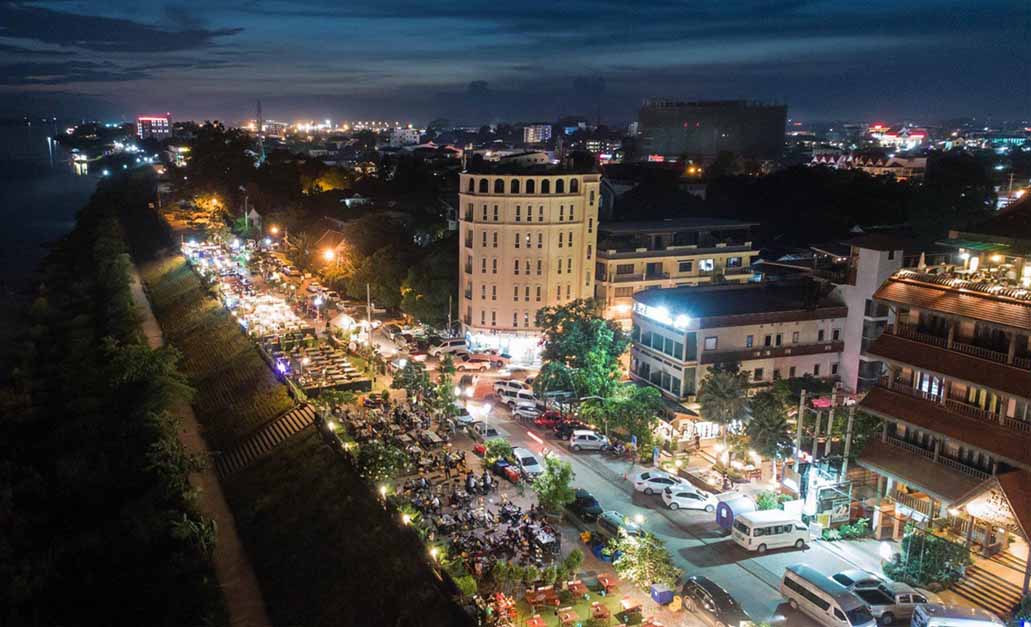As Laos reaches the midpoint of its five-year socio-economic development plan (NSEDP), the country looks back at the achievements and challenges of the past years.
The NSEDP, spanning 2021-2025, was designed to align with the resolutions of the 11th Party Congress and advance the National Strategy on Socio-Economic Development 2016-2025 and Vision 2030 of Laos.
The economic brunt of the COVID-19 pandemic over the past three years didn’t spare anyone, especially low-income countries like Laos.
The government’s 2021 GDP projection of USD 18.5 billion, seemingly on track, took a hit in 2022, dropping to USD 15.72 billion due to pandemic disruptions, border closures, and an economic downturn.
Despite these setbacks, the Bank of Laos Annual Economic Report for 2022 highlighted a number of resilient sectors, with the agricultural industry experiencing a notable 3.4 percent growth. This growth was credited to heightened investments in plantations and increased cattle exports to China and neighboring countries, resulting in a yield of 2,425,000 cattle.
The industrial sector faced severe challenges, with small manufacturing industries shutting down due to rising production costs. Nevertheless, the sector as a whole managed to grow by 4.4 percent.
But the service sector was the one that had the most growth in the previous year, experiencing a 5 percent upturn in 2022. This growth was attributed to the country’s post-pandemic reopening, the implementation of the Lao-China railway, and a surge in tourist arrivals, totaling 1,294,365.
In a bid to capitalize on the increasing momentum of tourism, the government aims to welcome between 2.9 million and 3.3 million foreign visitors by the end of 2023, with further increases in 2024 as outlined by the “Visit Laos Year 2024” tourism campaign.
With an ambitious goal of attracting 4.6 million tourists, and a revenue target of USD 712 million, the government “will offer cultural activities and traditional festivals in central and local areas,” Deputy Prime Minister Kikeo Khaykhamphithoune said at a national meeting in Vientiane Capital in September.
On the revenue front, projections for 2022 were surpassed, reaching LAK 32.4 trillion (USD 1.56 billion). However, a looming deficit is prompting the government to explore new income sources and streamline revenue collection.
Prime Minister Sonexay Siphandone, addressing the 6th National Assembly on 31 October, emphasized the government’s commitment to debt servicing, particularly foreign debt. PM Sonexay also alluded to the potential sale of stakes in hydropower projects to alleviate financial burdens.
Contrary to the industrial and service sectors, Laos’ monetary sector faced skyrocketing inflation challenges, surpassing the projected 6 percent increase until 2025. In February 2023, inflation spiked to 41.26 percent, but recent efforts by the Bank of Laos (BOL) aim to bring it down to a single-digit figure by the end of 2024.
“The bank will tighten the enforcement of monetary policy in order to create a larger money supply for circulation within the country,” the Governor of BOL, Bounleua Sinxayvoravong, reported to the 6th Ordinary Session of the National Assembly’s 9th legislature on 31 October.
Despite economic distress, Laos has managed to sustain economic growth and is avoiding an economic default. To continue this trend, the government is advocating for a renewed focus on rural development, poverty reduction, and enhancements in education, health services, and job creation.
As Laos gears up for major events in 2024, including the ASEAN Summit and the “Visit Laos Year 2024” tourism campaign, plans are underway to build a connected and resilient future, as portrayed in Laos’ ASEAN Chair theme, ASEAN: Enhancing Connectivity and Resilience.



